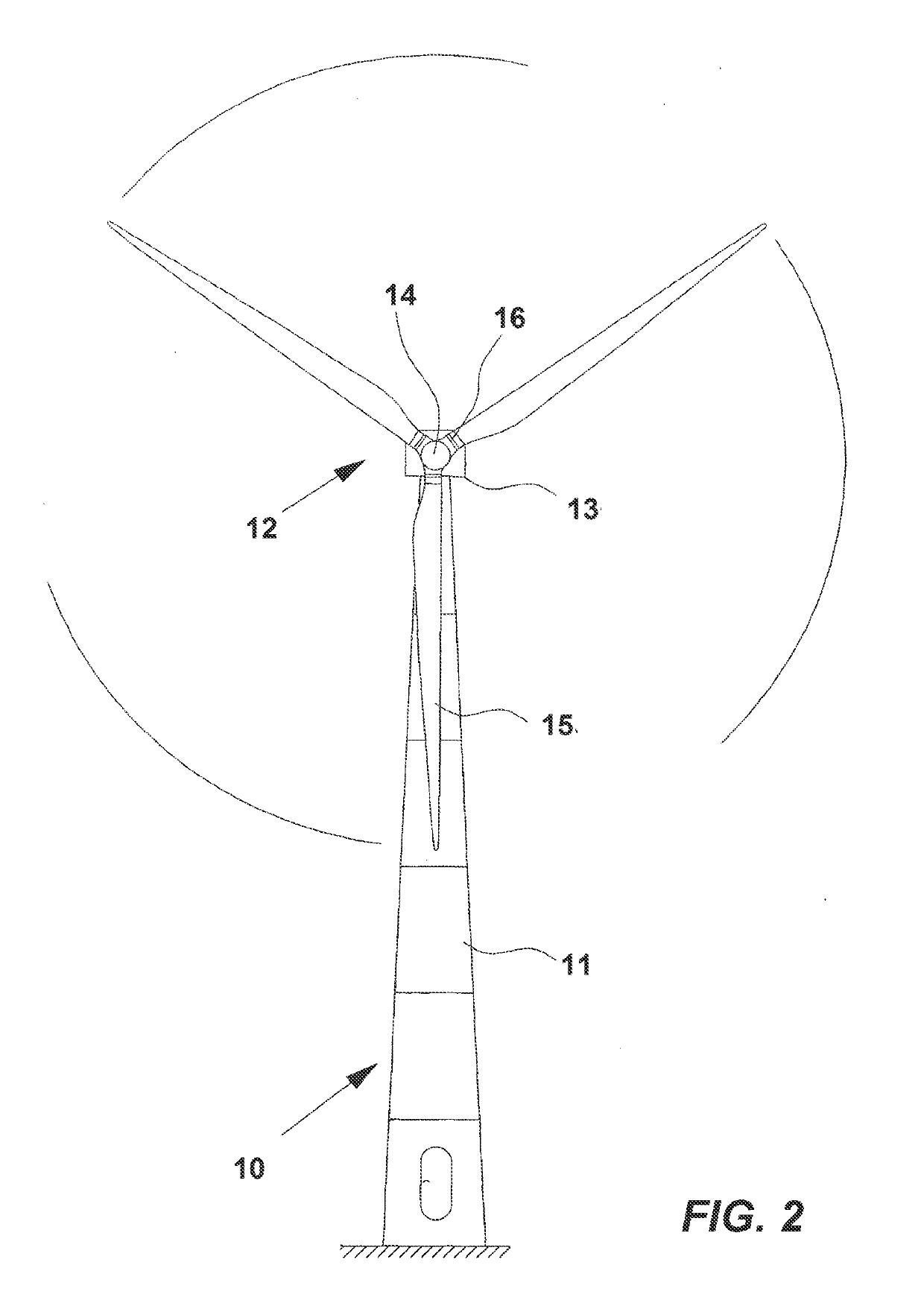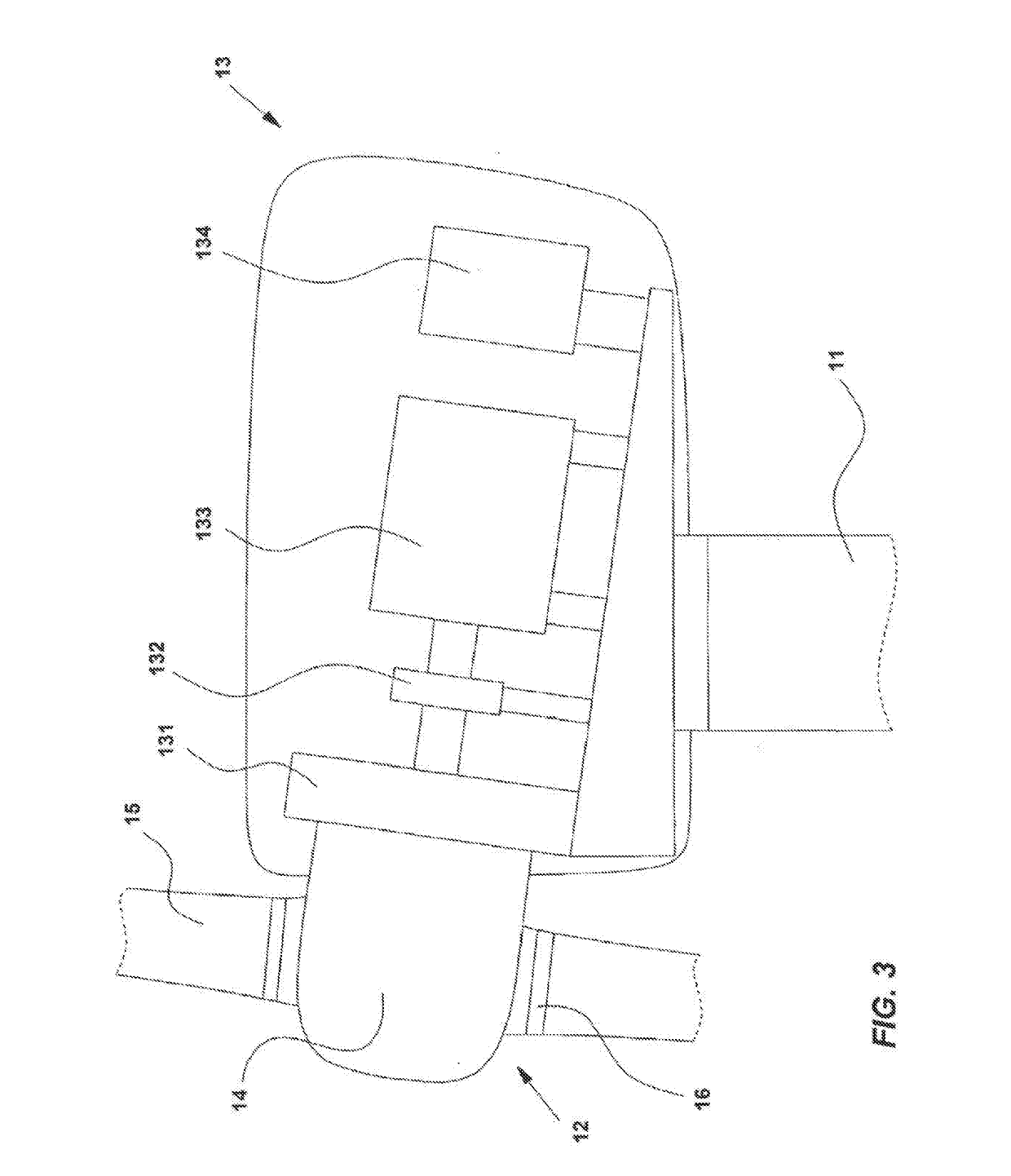Controlling wind turbine noise
a technology of wind turbines and noise, applied in the direction of passive/reactive control, motors, engine fuctions, etc., can solve the problems of wind turbine noise, noise complaints likely to be made, and noise from wind turbine components within the nacell
- Summary
- Abstract
- Description
- Claims
- Application Information
AI Technical Summary
Benefits of technology
Problems solved by technology
Method used
Image
Examples
Embodiment Construction
[0039]FIG. 1 illustrates a wind power plant (1) including a number of wind turbines (10a, 10b, 10c) and a neighbouring area (2) in which wind turbine noise is audible. For the purposes of implementing the present invention, the wind power plant (1) can have any number of wind turbines greater than or equal to one, and the wind turbines can be wind turbine models known in the art.
[0040]In the vicinity of the neighbouring area (2), or on or nearby a respective wind turbine, there is a microphone (20) configured to capture noise data, including data representative of the noise produced by one or more of the wind turbines (10a, 10b, 10c) of the wind power plant. The microphone captures noise data over a broad frequency spectrum and an extended time period with a suitable sampling rate, for example in accordance with the procedure described in the third edition of IEC 61400-11.
[0041]The noise data captured by the microphone (20) is communicated from the microphone for analysis. For examp...
PUM
 Login to View More
Login to View More Abstract
Description
Claims
Application Information
 Login to View More
Login to View More - R&D
- Intellectual Property
- Life Sciences
- Materials
- Tech Scout
- Unparalleled Data Quality
- Higher Quality Content
- 60% Fewer Hallucinations
Browse by: Latest US Patents, China's latest patents, Technical Efficacy Thesaurus, Application Domain, Technology Topic, Popular Technical Reports.
© 2025 PatSnap. All rights reserved.Legal|Privacy policy|Modern Slavery Act Transparency Statement|Sitemap|About US| Contact US: help@patsnap.com



